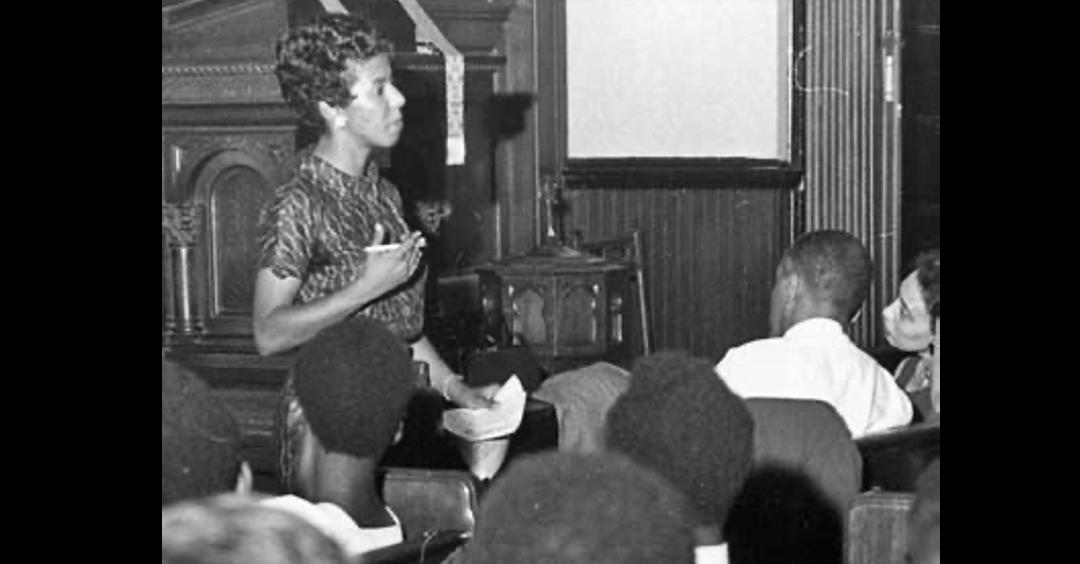by
_____
She grew up on the South Side of Chicago, a city divided by race. When she was eight, an angry protester threw a brick through the window of her family home.
Her father, disillusioned by the failings of America to achieve racial progress, planned to immigrate to Mexico, then died of a heart attack.
Lorraine Hansberry grew up to become a journalist, author, and playwright who used her public voice to support the rights of African Americans.
Now comes a new biography, Lorraine Hansberry: The Life Behind a Raisin in the Sun, by Charles J. Shields. Like Hansberry, Shields grew up in Chicago, he shares insight into that city and its longstanding race problems.

Hansberry’s views were deeply rooted in her childhood experiences. You can read her warm memories of Chicago’s South Side in an essay published in the collection, To Be Young, Gifted and Black. She recalled “the tempo of my people” — the gentle sounds of summer nights, screen doors swinging shut on back porches, the hushed voices of the neighbors.
Her father, Carl Augustus Hansberry, was a successful businessman who spent years of effort, and his own money, to support the NAACP’s legal fight against Chicago’s “restrictive covenants.” Those were the local housing rules that allowed white neighborhoods to keep African Americans out.
To challenge the laws, her family moved into a restricted white neighborhood – the Washington Park subdivision called Woodlawn — touching off angry white resistance. At one point mobs surrounded their house and someone threw the brick through the window. Her mother bought a gun.
Hansberry’s father and the NAACP fought the case all the way to the Supreme Court — and in 1940 they won. Hansberry v. Lee is a celebrated case.
But a legal victory is not the same as cultural change. Resistance to integration in Chicago remained strong, and change came slowly, if at all.
Hansberry transformed her family’s experience into a play — “A Raisin in the Sun,” which debuted in 1959, when she was just 28, making her the first Black woman to have a show produced on Broadway.
With it, Hansberry established herself as a voice for African-American youth.
“A Raisin in the Sun” gave white audiences a window into the lives of everyday black Americans dealing with with racism and economic inequality. And it gave black audiences, for the first time, a chance to see their own struggles on the stage.
Hansberry became more vocal. She spoke at protest rallies, including one for the NAACP in Washington Square Park in 1959. Here’s a speech she gave in Carnegie Hall in 1962 on the role of the artist in the peace movement and “the Negro struggle.”
Then came the 1963 Birmingham church bombing, killing four little girls and fueling more outrage and radicalism.
In May 1964, she spoke in Manhattan to young Black student winners of a writing contest sponsored by the United Negro College Fund and Readers Digest: “Write about our people: tell their story. You have something glorious to draw on begging for attention. Don’t pass it up.”
On June 16, 1954, Hansberry took part in a forum at Town Hall in New York City. The meeting was was intended to open a conversation about race between white liberals and black activists at a time of tremendous friction and unrest — not unlike today. The panel of speakers included a mix of African American and white authors, journalists, and artists.
When Hansberry’s time came to talk, she described her father’s deep frustration and despair. She expressed her own disillusionment with white liberals who urge blacks to pursue incremental change through accepted channels. That hadn’t worked, she said.
“Since 1619, Negroes have tried every method of communication, of transformation of their situation from petition to the vote, everything,” she said. “We’ve tried it all.”
She also charged the government with indifference toward black American lives. And she pointed her finger at the hypocrisy of white liberals, calling on them to “stop being a liberal and become an American radical.”
Hansberry’s remarks on that panel perfectly captured the moment — but also speak to the anguish and fury of our own time.
A transcript of Hansberry’s remarks, called “The Black Revolution and the White Backlash,” is here. You can hear a partial recording of her remarks here.
What the audience didn’t know was that at the same time she was waging battle against racism, Hansberry was also fighting pancreatic cancer. Her former husband, Robert Nemiroff, said she “rose from a sickbed” to be at the Town Hall. Seven months later, Hansberry was dead, at age 34.
She’s buried at the Bethel Cemetery in Croton-on-Hudson, New York.
© Copyright 2022
________________________________
Want to talk? Reach me at dana@danarubin.com

